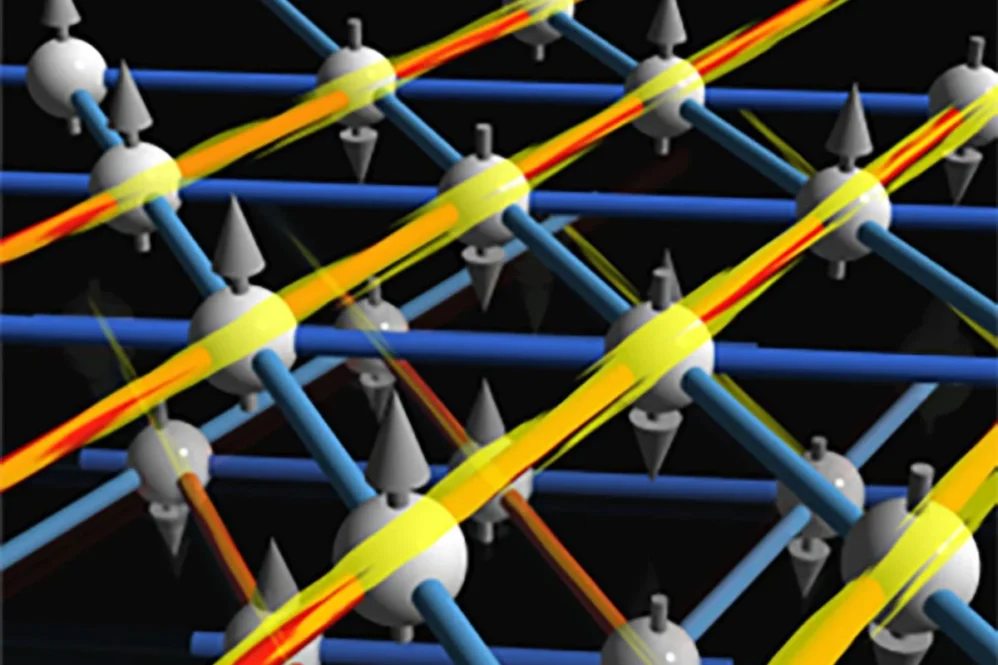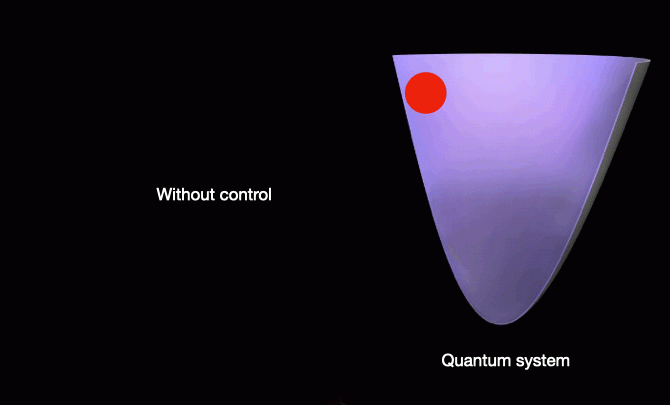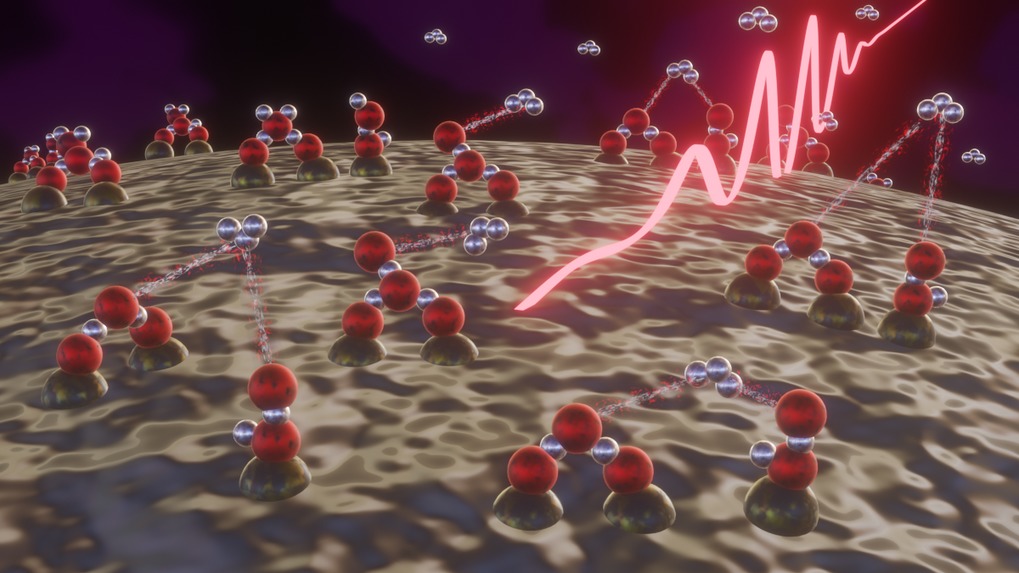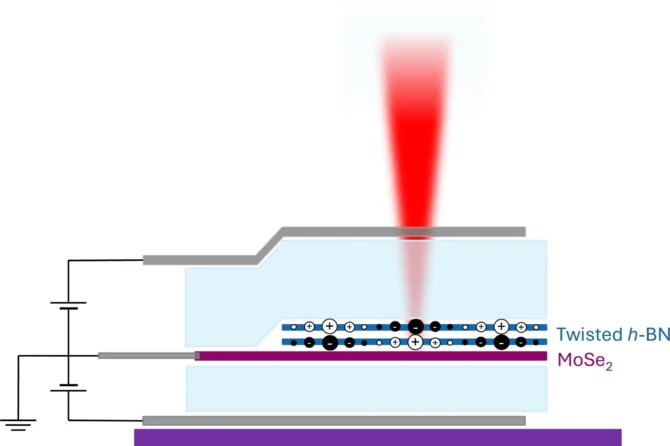Researchers have made a significant discovery that challenges our understanding of quantum spin liquids (QSLs) by studying the material β’-EtMe3Sb[Pd(dmit)2]2. Led by Professor Yasuyuki Ishii at the Shibaura Institute of Technology, the team found that this material, previously thought to exhibit two-dimensional (2D) quantum spin liquid behavior, actually shows one-dimensional (1D) spin dynamics.
Quantum spin liquids, first proposed by Philip Anderson in the 1970s, are exotic states of matter where magnetic spins remain in constant motion and never settle into a fixed pattern, even at extremely low temperatures. This behavior results from magnetic frustration, where competing interactions prevent the system from forming an ordered pattern. QSLs are particularly challenging to study because they don’t undergo clear magnetic transitions that can be detected using conventional methods.
The material in question, β’-EtMe3Sb[Pd(dmit)2]2, features a triangular lattice structure that was thought to be ideal for QSL behavior due to its inherent frustration. Previous studies suggested it might be a 2D quantum spin liquid, but there was uncertainty about whether other factors might be influencing its behavior.
The breakthrough came through a collaborative study involving researchers from multiple institutions, including the RIKEN Cluster for Pioneering Research, Rutherford Appleton Laboratory, and Kumamoto University. The team used a combination of experimental techniques, including electron spin resonance (ESR) and muon spin rotation (μSR), along with theoretical modeling approaches.
Their findings revealed that the spin dynamics in β’-EtMe3Sb[Pd(dmit)2]2 are dominated by quasi-one-dimensional behavior, contrary to the expected 2D characteristics. This was particularly surprising because the direction of the 1D spin diffusion appeared in what was previously considered the weakest interaction direction in the triangular lattice. The μSR experiments confirmed these results by showing a B-0.5 pattern in spin relaxation, a characteristic signature of 1D spin diffusion.
The discovery has significant implications for both fundamental physics and potential technological applications. As co-author Yugo Oshima noted, quantum spin liquids could play a crucial role in developing next-generation technologies, including quantum computers and spintronics devices. This research provides an important foundation for understanding these materials and their potential applications.
However, several questions remain unanswered. The exact mechanisms of dimensional reduction in this context are not fully understood, and researchers still need to investigate the relationship between magnetic frustration, quantum fluctuations, and multi-orbital effects. Professor Ishii and his team plan to extend their research to other QSL candidates, hoping to uncover general principles that govern these materials’ behavior.
The study’s success highlights the importance of using advanced experimental techniques like ESR and μSR in studying quantum spin liquids. By demonstrating that these exotic quantum states exist and can be measured dynamically, the research brings us closer to understanding and harnessing the potential of these unusual materials.
The findings were published in Physical Review Letters and represent a significant step forward in our understanding of quantum materials. The research not only challenges existing assumptions about quantum spin liquids but also opens new avenues for exploration in condensed matter physics and materials science. As we continue to uncover the mysteries of these exotic states of matter, we may find ourselves closer to realizing their potential in revolutionary technological applications.
Reference: “Quasi-One-Dimensional Spin Dynamics in a Molecular Spin Liquid System” by Yugo Oshima, Yasuyuki Ishii, Francis L. Pratt, Isao Watanabe, Hitoshi Seo, Takao Tsumuraya, Tsuyoshi Miyazaki and Reizo Kato, 3 December 2024, Physical Review Letters. DOI: 10.1103/PhysRevLett.133.236702





